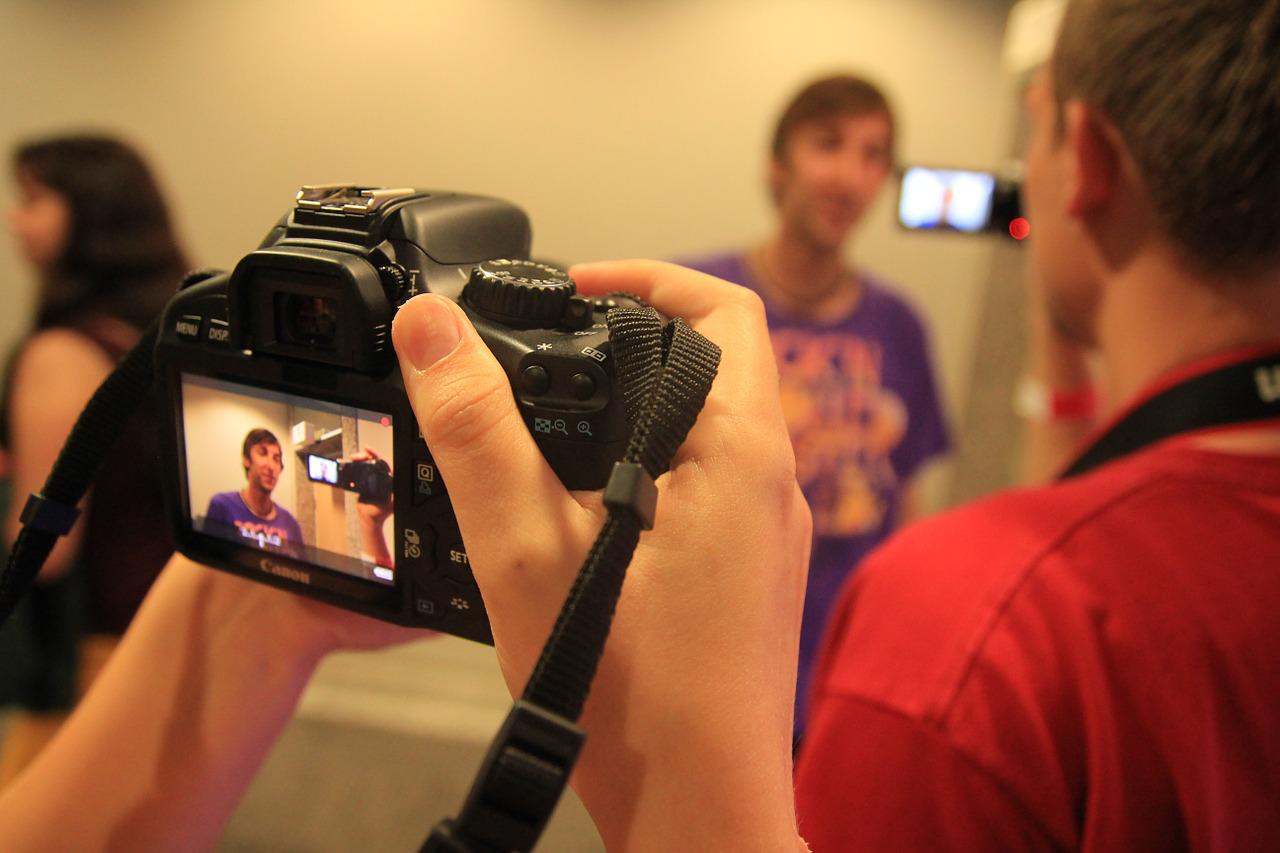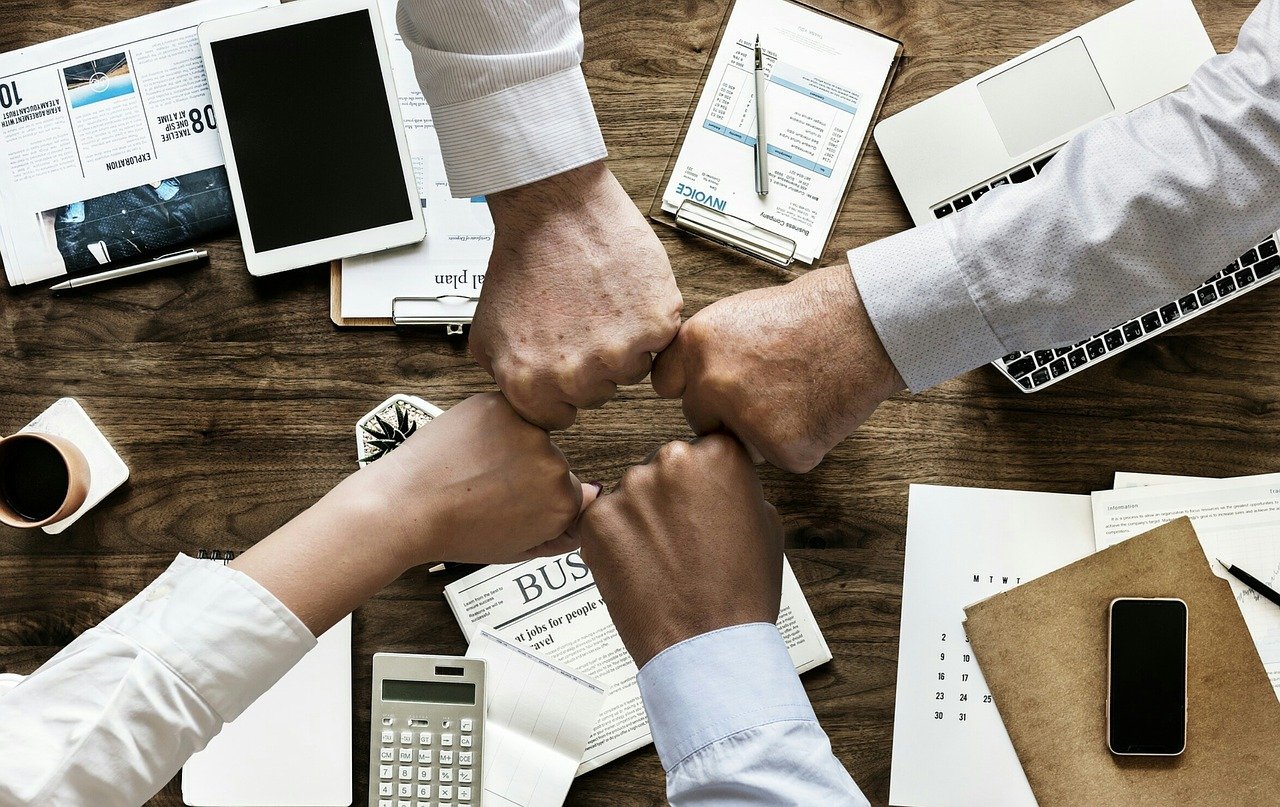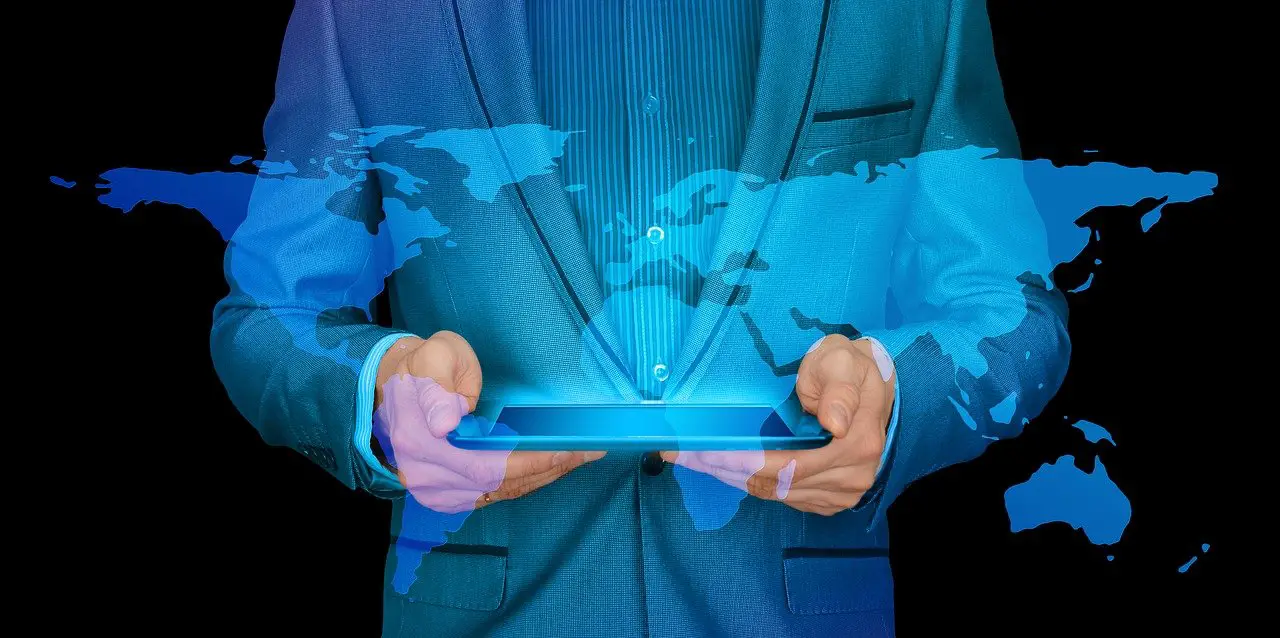Colombia-MICE is part of the Pelecanus Travel Group. Based in Bogota, Colombia, we specialize in business travel and all services related to meetings, incentives, congresses and exhibitions.
In Latin America, you will find countless hotels that meet all the requirements of business travelers. That’s why we’ve put together 13 business hotels in the continent’s most important travel destinations for you below.
We recommend these hotels for business travelers because they offer:
- Meeting room
- Conference rooms
- Video calling features
- Business centers
- Good location
- Unlimited internet access
- Advice on the implementation of events
Hotels for business travelers in Colombia
Hotel Grand Hyatt – Bogotá, Colombia
CLICK HERE TO GET THE BEST RATES FOR GRAND HYATT BOGOTA
Location: Cl. 24a # 57 – 60, Bogotá DC, Colombia
Rooms: 373
Standard room cost per night (1 person): 230 USD
Room types: Accessible | King bed (41 m²), Accessible | Two Double Beds (41 m²), ADA (41 m²), Grand Club (41 m²), King Size Bed (41 m²), Two Double Beds (41 m²), View (41 m²)
Suites: Grand ADA (85 m²), Corner View of the Andes (75 m²), Corner (75 m²), Grand Executive (100 m²), Grand (85 m²), Diplomatic (115 m²), Presidential (200 m²), Two Bedrooms (167 m²)
Services: WiFi, Pet-Friendly Rooms, Parking, Swimming Pool, Concierge, Laundry Facilities, Digital Key, Online Check-In
Business Center: Yes
Awards: 2018 Fiabci Award, TripAdvisor Travelers ‘ Choice 2021
The Grand Hyatt Hotel is the first of this world-renowned hotel chain in the country and offers several options for both business travelers and tourists.
It is strategically located just 15 minutes from El Dorado International Airport, 10 minutes from Bogotá’s historic center and less than 5 minutes from the American Embassy. In addition, this hotel is only minutes away from 4 shopping malls and more than 10 restaurants.
All kinds of luxury rooms, restaurants, spas and fitness centers are located in an area of 78,000 square meters.
Event, meeting and conference rooms in the Grand Hyatt Hotel:
- Congress Center: capacity of 1,300 people
- Grand Ballroom: Auditorium with capacity for up to 1,250 people
- El Dorado Ballroom: Auditorium with capacity for 600 people
- El Dorado Foyer: Intended for trade shows or open cocktails
- Terraza: Ideal for weddings and social events for up to 150 people
- Gallery: Showroom with capacity for 50 people
- Loft kitchen: Perfect for small events with a live cooking show
- 11 meeting rooms
- Club Lounge
Hilton Bogota Corferias – Bogotá, Colombia
CLICK HERE TO GET THE BEST RATES FOR HILTON BOGOTA CORFERIAS
Location: Cra . 37 # 24 29, Bogotá DC, Colombia
Rooms: 410
Standard room cost per night (1 person): 175 USD
Room types: Deluxe (32 m²), Executive (44 m²)
Suites: Suite (64 m²)
Services: Pet friendly, Restaurant, Indoor pool , Gym, Parking, Sauna, Jacuzzi, Bar, Concierge
Business Center: Yes
Awards: Best New Hotel of 2019, TripAdvisor Travelers ‘ Choice 2021
The Hilton Bogota Corferias is one of the best hotels in the whole country and mainly focuses on welcoming business travelers and participants from the MICE industry.
It has a modern and luxurious infrastructure that, thanks to its strategic location, is among the best options that Bogotá has to offer its visitors. It is located in the city’s largest event venue, the Corferias Bogotá Exhibition Center and in front of the Ágora Convention Center, just 15 minutes from the airport and the historic center.
Other places of interest that can be easily reached from this hotel are the Gold Museum, several shopping malls, the La Candelaria district, the Botero Museum, the Movistar Arena, El Campin Stadium and several good international restaurants.
This hotel offers rooms with a modern design and equipped to receive all types of executives, as well as various rooms set up for events, conferences and congresses.
Rooms for events, meetings and conferences at the Hilton Bogota Corferias hotel
- 8 meeting rooms with access to the terrace
- Ballroom: with a capacity for 700 people
- Salon Cerro and Salon Laguna: Rooms with a capacity of between 80 and 150 people
- Hilton Bogotá Corferias Terrace: ideal for outdoor ceremonies, weddings or cocktails
Hotel Radisson Cartagena Ocean Pavillion – Cartagena, Colombia
CLICK HERE TO GET THE BEST RATES FOR RADISSON CARTAGENA OCEAN PAVILLION
Location: Cra. 9 # 22 – 850, Cartagena, Colombia
Standard room cost per night (1 person): 120 USD
Rooms/apartments: 233
Room types: twin rooms (32 m²), double room (32 m²), queen (32 m²), double room queen (32 m²)
Suites: Studio Suite King (66 m²), Studio Suite Double King (88 m²), Bedroom Suite (109 m²)
Services: Gym, Spa, Terrace, Wi-Fi, Parking, Wet Areas, Concierge, Beauty Salon, Swimming Pool, Sports Fields, Beach
Business Center: Yes
Awards: TripAdvisor Travelers ‘ Choice 2021, Hospitality Excellence Award, Safehotels Premium Certification
The Radisson Hotel in Cartagena is one of the most famous of this chain in Latin America. It is 15 minutes from the old town and within walking distance of major brand shops, international restaurants and bars. This hotel is a great option for business travelers thanks to the facilities such as 24–hour service, multilingual staff, transport service to the airport and the city’s convention centers, among others.
Event, meeting and conference space at the Radisson Cartagena Ocean Pavilion Hotel:
- Cannons Ballroom: Capacity of 311 people
- Foyer: Expandable area (auditorium) with capacity for 300 people
- Room Muralla: Capacity of between 80 and 100 people
- Room Miramar: Capacity of between 80 and 100 people
- Laguna room: Capacity of between 80 and 100 people
- Hall Vela: Capacity of between 30 and 60 people
- Corales Hall: Capacity of 50 people
- Mangrove Room: Capacity of up to 12 people
Hotel Marriott Medellín – Medellín, Colombia
CLICK HERE TO GET THE BEST RATES FOR HOTEL MARRIOT MEDELLIN
Location: Cra . 1 A Sur # 43 A – 83, Medellín, Colombia
Standard room cost per night (1 person): 120 USD
Rooms/Apartments: 233
Room types: King (29 m²), Double (29 m²), Deluxe King (36 m²), Deluxe Double (36 m²)
Suites: Junior Suite (74 m²), Presidential Studio Suite (87 m²)
Services: Gym, Restaurants, Spa , Terrace, Wi-Fi, Parking, Wet Areas, Concierge, Private Transport, Bar, Garden
Awards: TripAdvisor Travelers ‘ Choice 2021
The Medellin Marriott Hotel is located in El Poblado. You will find renowned designer shops, clubs, discotheques, restaurants and bars there. For business travelers, this hotel offers its customers software to manage everything related to the organization of events, as well as technological equipment, and business and executive services.
Rooms for events, meetings and conferences at the Hotel Marriott Medellín:
- Great Hall: Capacity up to 350 people
- Room 1: Capacity for up to 160 people
- Room 2: Capacity between 80 and 100 people
- Room 3: Capacity between 80 and 100 people
- Conference room: Capacity of up to 14 people
- Meeting room: Capacity of up to 14 people
- Terrace: The capacity varies depending on the type of event
Hotels for business travelers in Argentina
Argentina is also a popular travel destination. Here are our recommendations for business travelers for hotels in Argentina:
Hotel Howard Johnson Plaza Buenos Aires – Buenos Aires, Argentina
CLICK HERE TO GET THE BEST RATES FOR HOWARD JOHNSON PLAZA BUENOS AIRES
Standard room cost per night (1 person): 65 USD
Rooms/apartments: 106
Room types: Executive (32 m²)
Suites: Junior Suite (32 m²), Governor Suite (42 m²)
Services: gym, spa, relaxation room, restaurant, bar, solarium, terrace, wi-fi, parking, private transport 24 hours
Business Center: Yes
Rooms for events, meetings and conferences at Hotel Howard Johnson Plaza Buenos Aires:
- Don Horacio: Capacity up to 200 people
- Cathedral Convention Hall: Capacity for up to 150 people
- Diagonal Convention Hall: Capacity up to 100 people
- Business Room I: Capacity between 10 and 20 people
- Business Room II: Capacity between 10 and 20 people
- Business Room III: Capacity between 30 and 40 people
ARC Recoleta Boutique Hotel & Spa – Buenos Aires, Argentina
CLICK HERE TO GET THE BEST RATES FOR ARC RECOLETA BOUTIQUE HOTEL
Location: Calle Peña 2155 – Recoleta, Buenos Aires, Argentina
Standard room cost per night (1 person): 130 USD
Rooms/apartments: 57
Room types: Superior room (32 m²), Superior room balcony (35 m²), Deluxe room (35 m²)
Suites: Special Suite ACR (58 m²)
Services: gym, spa, indoor pool, whirlpool, sauna, restaurant, bar, solarium, terrace, Wi-Fi, bar,
restaurant, private transport, car rental
Business Center: Yes
Awards: TripAdvisor Travelers ‘ Choice 2019, Loved By Guests Award Winner 2020, Best Hotel 2019 K Argentina
Hotel ARC Recoleta is a favorite of business travelers due to its strategic, central location. In the immediate vicinity, you will find shopping malls, financial centers, museums, theaters and the cultural center Recoleta, libraries, train stations, metro stations and the La Rural Convention Center. In addition, it is only a few minutes’ drive from Ministro International Airport Pistarini and Jorge Newbery Airport.
In addition, this hotel offers a wide range of possibilities for holding events, congresses and meetings, among other things.
Spaces for events, meetings and conferences at ARC Recoleta Boutique Hotel & Spa:
- Malva room: capacity for up to 80 people
- Business Hall: Capacity between 20 and 50 people
- Terrace: The capacity varies depending on the type of event
Hotels for business travelers in Brazil
Year after year, Brazil receives a large number of business travelers attracted by the largest country on the continent. With more than 200 million inhabitants, Brazil is also one of the largest consumer markets in the world.
The following are our hotel recommendations for business travelers in Brazil:
Hotel Vila Galé Fortaleza – Fortaleza, Brasil
CLICK HERE TO GET THE BEST RATES FOR VILA GALE FORTALEZA
Location: Av. Dioguinho, 4189 – Praia do Futuro, Fortaleza, Brazil
Standard room cost per night (1 person): 85 USD
Rooms/apartments: 300
Room Types: Standard (30 m²), standard with a view (30 m²), family (30 m²)
Suites: Suite (61 m²)
Services: Gym, Spa, Private Beach, Club, Restaurants, Bars, Swimming Pools, Terrace, Wi-Fi, Parking, Private Transport, Shops
Business Center: Yes
Awards: Certificate of Excellence Tripadvisor 2019
The Hotel Vila Galé Fortaleza is one of the most important hotels in this area as it offers a wide variety of services mainly focused on the well-being of its customers. This is very close to well-known attractions such as beaches, shopping malls, cultural centers, business centers, Beira Mar Fair, Castelão Stadium, Mirante de Fortaleza and Espaco Cultural Uniform.
In addition, the hotel is known for its infrastructure focused on holding high-level events.
Rooms for events, meetings and conferences at Hotel Vila Galé Fortaleza:
- Modular Room: Capacity of up to 400 people
- Room Iracema: Capacity between 100 and 180 people
- Vasco da Gama Room: Capacity between 100 and 180 people
- Master Room: Capacity of up to 900 people
- Fernando Pessoa Room: Capacity of up to 380 people
- Vinicius de Moraes Room: Capacity for up to 480 people
- Eça de Queirós Room: Capacity up to 380 people
- José de Alencar Room: Capacity up to 480 people
- Room Tom Jobim: Capacity up to 60 people
- Room Amália Rodrigues: Capacity up to 60 people
Hotel Hilton Barra Rio de Janeiro – Rio de Janeiro, Brazil
CLICK HERE TO GET THE BEST RATES FOR HILTON BARRA RIO DE JANEIRO
Location: Av. Embaixador Abelardo Bueno, 1430 – Barra da Tijuca, Rio de Janeiro, Brazil
Standard room cost per night (1 person): 120 USD
Rooms/apartments: 298
Room Types: King (28 m²), king Lagoon (28 m²), double room (28 m²), double room lagoon (28 m²)
Suites: King Suite (54 m²), King Balcony Suite (59 m²), Presidential Suite (100 m²)
Services: Gym, Spa, Restaurants, Bars, Pool, Terrace, Wi-Fi, Parking, Private Transport
Business Center: Yes
Awards: Winner of the World Travel Awards 2017, Certificate of Excellence TripAdvisor 2017
The Hilton Barra Rio de Janeiro Hotel is one of the premier Hilton hotels in Latin America. Thanks to the good service of its staff and its strategic location, just a few minutes from the main international and financial centers of Rio de Janeiro, this hotel is ideal for business travelers who want to stay in accommodations with luxury, comfort, and easy access.
Rooms for events, meetings and conferences at the Hotel Hilton Barra Rio de Janeiro:
- Halls Bromelia: Capacity between 70 and 500 people
- Halls Nogueira: Capacity between 50 and 200 people
- Pequi rooms: capacity between 40 and 120 people
- Rooms Cerejeira: Capacity between 40 and 90 people
- Extravagant room: capacity between 15 and 30 people
Hotels for business travelers in Chile
Chile is one of the currently stronger growing travel destinations in Latin America. Thanks to the organization of more than 50 international events, the market for various sectors is growing and more and more visitors come to Chile.
The following are our hotel recommendations for business travelers in Chile:
AC Hotel Santiago Costanera Center – Santiago de Chile, Chile
CLICK HERE TO GET THE BEST RATES FOR AC HOTEL MARRIOTT SANTIAGO COSTANERA CENTER
Location: Av. Vitacura 130, Providencia , 7510605, Metropolitan Area – Santiago, Chile
Standard room cost per night (1 person): 130 USD
Rooms/apartments: 249
Room Types: King (30 m²), double room (30 m²), king corner (44 m²)
Suites: 1-bedroom suite (60 m²)
Services: gym, restaurant, indoor pool, wi-fi, parking, spa
Business Center: Yes
Awards: TripAdvisor Travelers ‘ Choice 2021
Located in one of the best areas of Santiago, the AC Hotel Santiago Costanera Center belongs to the Marriott hotel chain and is one of the favorites in the country. With its modern spaces and European style, this hotel offers its customers numerous services, able to meet all their needs.
A few minutes walk and with direct access, there is the emblematic Costanera Center shopping center with restaurants, international brand shops and various entertainment venues. It is also 2.8 km from the Santiago Cable Car and 2.9 km from the Parque Bicentenary Santiago away. Santiago International Airport is a 25-minute drive away.
The property has its business center and 7 customizable function rooms.
Venues for events, meetings and conferences at the AC Hotel Santiago Costanera Center:
- Meeting room 1: Capacity of up to 20 people
- Meeting room 2: Capacity of up to 15 people
- Meeting room 3: Capacity of up to 15 people
- Meeting room 4: Capacity between 20 and 70 people
- Meeting room 5: Capacity between 25 and 90 people
- Meeting room 6: Capacity between 30 and 100 people
- Meeting room 4: Capacity between 15 and 200 people
Hotels for business travelers in Ecuador
The following are our hotel recommendations for business travelers in Ecuador:
Hotel Wyndham Guayaquil – Guayaquil, Ecuador
CLICK HERE TO GET THE BEST RATES FOR HOTEL WYNDHAM GUAYAQUIL
Location: Numa Pompilio Llona SN, Puerto Santa Ana – Guayaquil, Ecuador
Standard room cost per night (1 person): 120 USD
Rooms/apartments: 179
Room Types: King (36 m²), double room (36 m²), deluxe (36 m²)
Suites: Junior Suite (65 m²)
Services: Gym, Spa, Terrace, Wi-Fi, Parking, Private Transportation, Concierge, Swimming Pool, Golf Course
Business Center: Yes
Awards: Best of Wyndham, TripAdvisor Travelers ‘ Choice 2021
The Wyndham Guayaquil is one of the largest hotels in the city. Thanks to its proximity to José Joaquín de Olmedo International Airport (10 minutes’ drive), most international visitors stay here. In addition, it is within walking distance of the city center, 3 shopping malls, craft centers and the financial and commercial center of Guayaquil.
This hotel has a modern, comfort-oriented infrastructure and well-equipped rooms for events and conferences at a high level.
Rooms for events, meetings and conferences at the Hotel Wyndham Guayaquil:
- Main room: Capacity of up to 600 people
- Meeting room 2: Capacity between 15 and 30 people
Hotels for business travelers in Peru
The country of Peru is one of the fastest-growing economies in South America. This is because of its climatic diversity, its large territory, its natural resources and, above all, its macroeconomic and political stability.
The following are our hotel recommendations for business travelers in Peru:
Delfines Hotel & Convention Center – Lima, Perú
CLICK HERE TO GET THE BEST RATES FOR DELFINES HOTEL & CONVENTION CENTER
Location: Cra. Los Eucaliptos 555, San Isidro 15076, Lima, Peru
Standard room cost per night (1 person): 160 USD
Rooms/apartments: 206
Room types: Superior (28 m²), Superior Plus (33 m²), Executive (28 m²/33 m²)
Suites: Junior Suite (46 m²), Senior Suite (65 m²), Deluxe Suite (75 m²), Olympus Suite (96 m²)
Services: gym, spa, terrace, wifi, parking, restaurants, bars, heated pools
Business Center: Yes
The Dolphins Hotel and Convention Center is located in the most exclusive financial and residential district of the city of Lima. In the immediate vicinity, you will find the Lima Golf Club, a variety of tourist attractions, shops, restaurants, nightclubs and the financial center.
This hotel is known for its elegance, luxury and personalized service. It also has meeting rooms equipped with the latest technology and an exclusive catering service for every event.
Venues for events, meetings and conferences at Delfines Hotel & Convention Center:
- Mediterranean Hall: Capacity of up to 800 people
- Atlantis room: Capacity between 100 and 130 people
- Room Oppian: Capacity between 100 and 120 people
- Oceanus Room: Capacity of up to 145 people
- Neptuno Room: Capacity for up to 60 people
- Triton Room: Capacity of up to 60 people
- Room Tom Jobim: Capacity of up to 60 people
- Room Amália Rodrigues: Capacity of up to 60 people
- Poseidon Room: Capacity of up to 30 people
- Foyer room: Capacity of up to 30 people
- Directory room: Capacity of up to 12 people
- Arión room: Capacity of up to 16 people
Hotels for business travelers in Mexico
Mexico has always been a leader in terms of tourism in Latin American countries, in part due to its proximity to North America, its rich cultural diversity, and its wide variety of tourist destinations. It is considered to be a highly competitive country in the meetings tourism industry worldwide, thanks to the availability of a wide and growing infrastructure of tourist services.
Here are our hotel recommendations for business travelers in Mexico:
Hotel Krystal Urban Airport Mexico City – Ciudad de México, México
CLICK HERE TO GET THE BEST RATES FOR KRYSTAL URBAN AIRPORT
Location: Av Licenciado Javier, Av. Javier Rojo Gómez 630, Reform Laws 3rd Section, Mexico City, Mexico
Standard room cost per night (1 person): 70 USD
Rooms/apartments: 96
Room types: Standard King (26 m²), Standard Double (26 m²), Deluxe King (30 m²)
Suites: Junior Suite (36 m²)
Services: Gym, spa, terrace, restaurant, bar, private transport service, wifi, parking
Business Center: Yes
Awards: TripAdvisor Travelers ‘ Choice 2022
The Krystal Urban Hotel offers a wide range of services to meet the needs of its guests and customers. It is just 20 minutes from Benito Juárez Airport, 15 minutes from El Foro Sol and walking distance from Parque Shopping Center Tezontle removed.
Rooms for events, meetings and conferences Krystal Urban Aeropuerto Ciudad de México:
- Ébano room: Capacity between 50 and 300 people
- Zebrano Room: Capacity for up to 220 people
- Meeting room I: Capacity of 12 people
- Meeting room II: Capacity of 10 people
Executive Express Hotel – Guadalajara, México
CLICK HERE TO GET THE BEST RATES FOR EXECUTIVE EXPRESS HOTEL
Location: Av. Mexico 2920, Terranova, 44689 Guadalajara, Jal., Mexico
Standard room cost per night (1 person): 80 USD
Rooms/apartments: 113
Room types: standard single room (26 m²), standard double room (26 m²), executive single room (26 m²), executive double room (26 m²)
Suites: Executive Suite (40 m²), Double Suite (40 m²)
Services: gym, spa, terrace, restaurant bar, private transport service, valet parking, Wi-Fi, parking
Business Center: Yes
Awards: TripAdvisor Travelers’ Choice 2020
The Executive Express Hotel is located in the financial and gourmet district of Guadalajara, very close to the city’s major shopping malls and convention centers. The hotel is also a convenient option for visiting the historic center and attractions such as the United States Consulate, Akron Stadium and Jalisco Stadium, the Baseball Stadium, the Telmex Auditorium and other attractions.
This hotel has comfortable spaces and practical services so that its guests can work comfortably. If you want to get together with your team, several meeting rooms are available in this hotel.
Rooms for events, meetings and conferences Executive Express Hotel:
- Vulkansaal: Capacity for up to 100 people
- Hall Los Altos: Capacity between 15 and 40 people
- Atotonilco room: Capacity between 10 and 20 people
- Lagos room: Capacity between 10 and 20 people








